Abstract
1. Single unit activity of muscle spindle afferents from finger extensor muscles was recorded in the radial nerve of waking human subjects. The mean discharge rate of the afferent units was determined while the receptor related finger was held at fixed angular positions of the metacarpo-phalangeal joint. 2. During a visual tracking task the subjects had to maintain specified angular positions against a load of constant torque which opposed finger extension. For each unit a comparison was made between the mean discharge rates at two angular positions which differed by 20 deg. Under such isotonic conditions the rates of afferent discharge at the two joint positions did not significantly differ, neither for the whole sample of primary, nor for that of secondary units. This was true, no matter whether the load was small or intermediate. Large loads were not tested. 3. For comparison, the passive position responses of a sample of spindle afferent units from the same muscles were studied when the finger was held in fixed positions while the muscles were voluntarily relaxed. Under these conditions a significant position sensitivity was found for both primary and secondary afferents. The mean values were 0.28 impulses/sec. deg (primaries), and 0.21 impulses/sec. deg (secondaries). 4. The absence of position response during active position holding was interpreted as a manifestation of changes in fusimotor outflow which depended on joint position and were large enough to compensate for changes in muscle length.
Full text
PDF

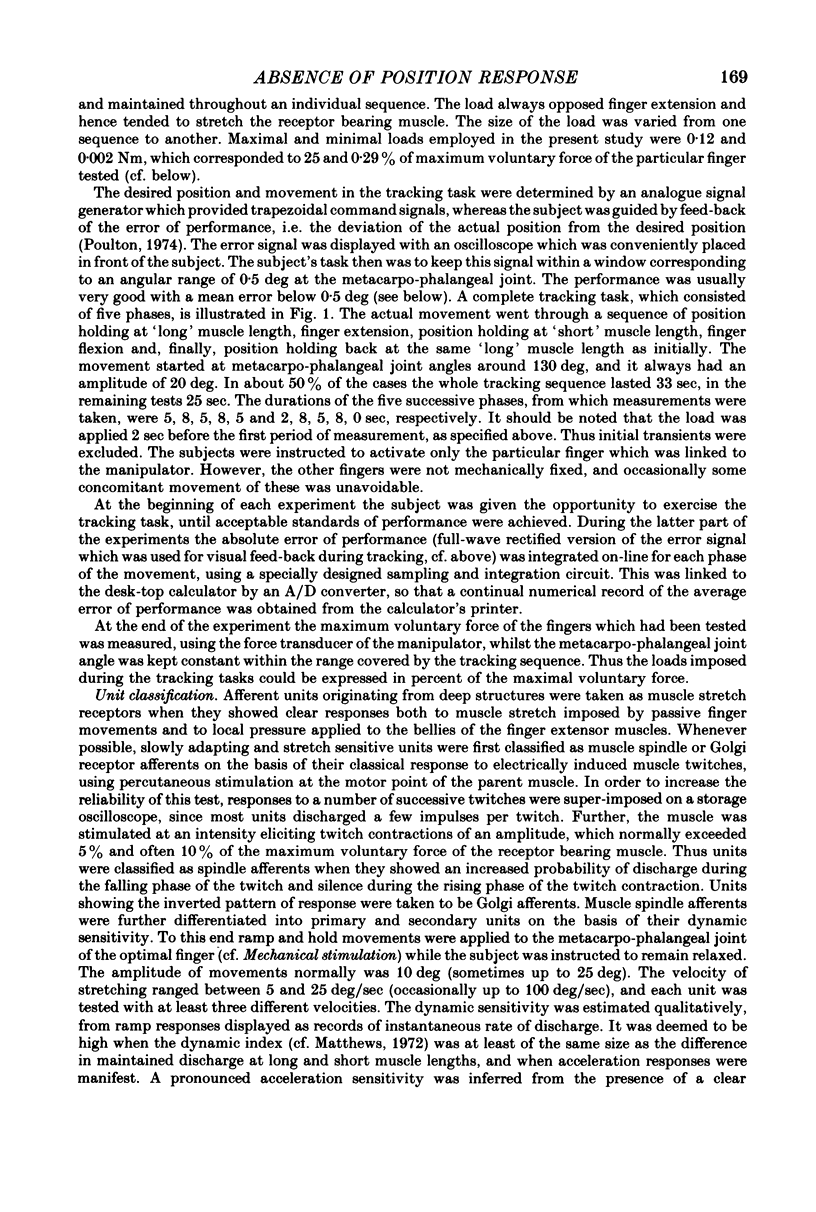

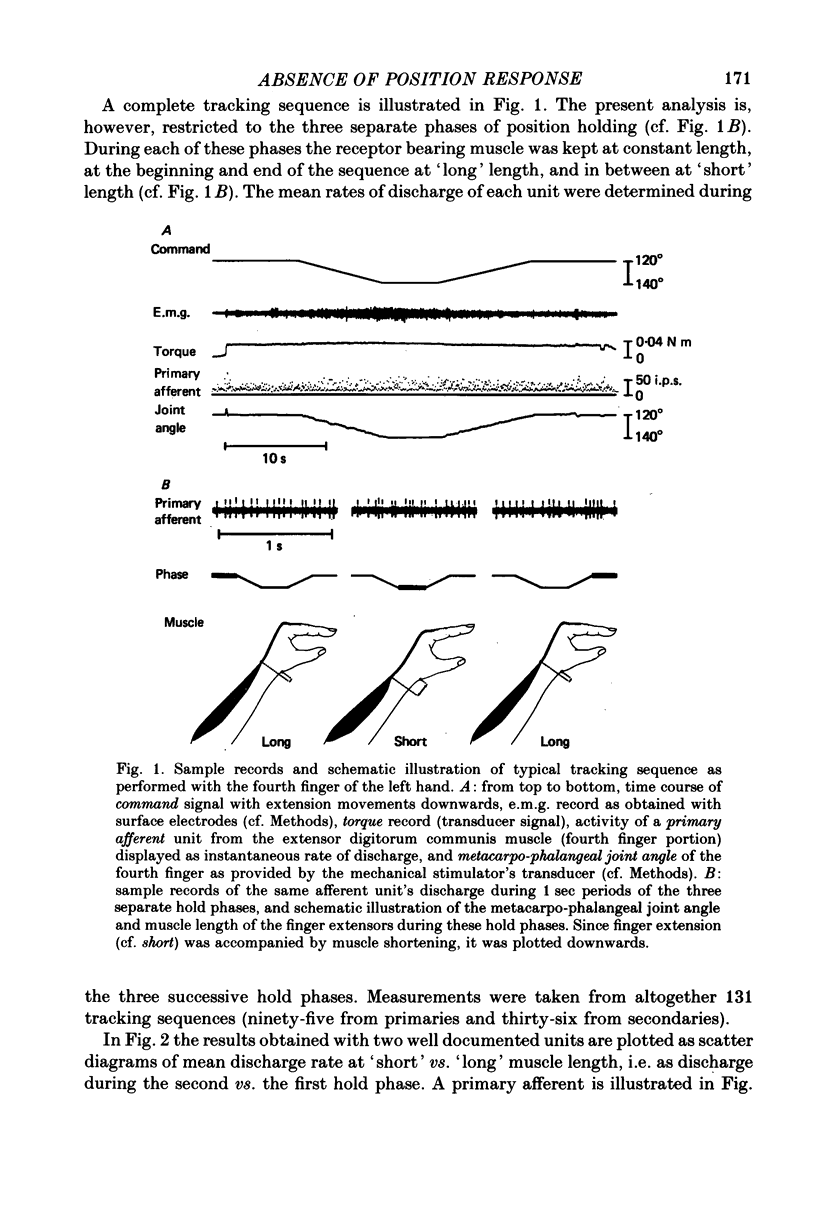

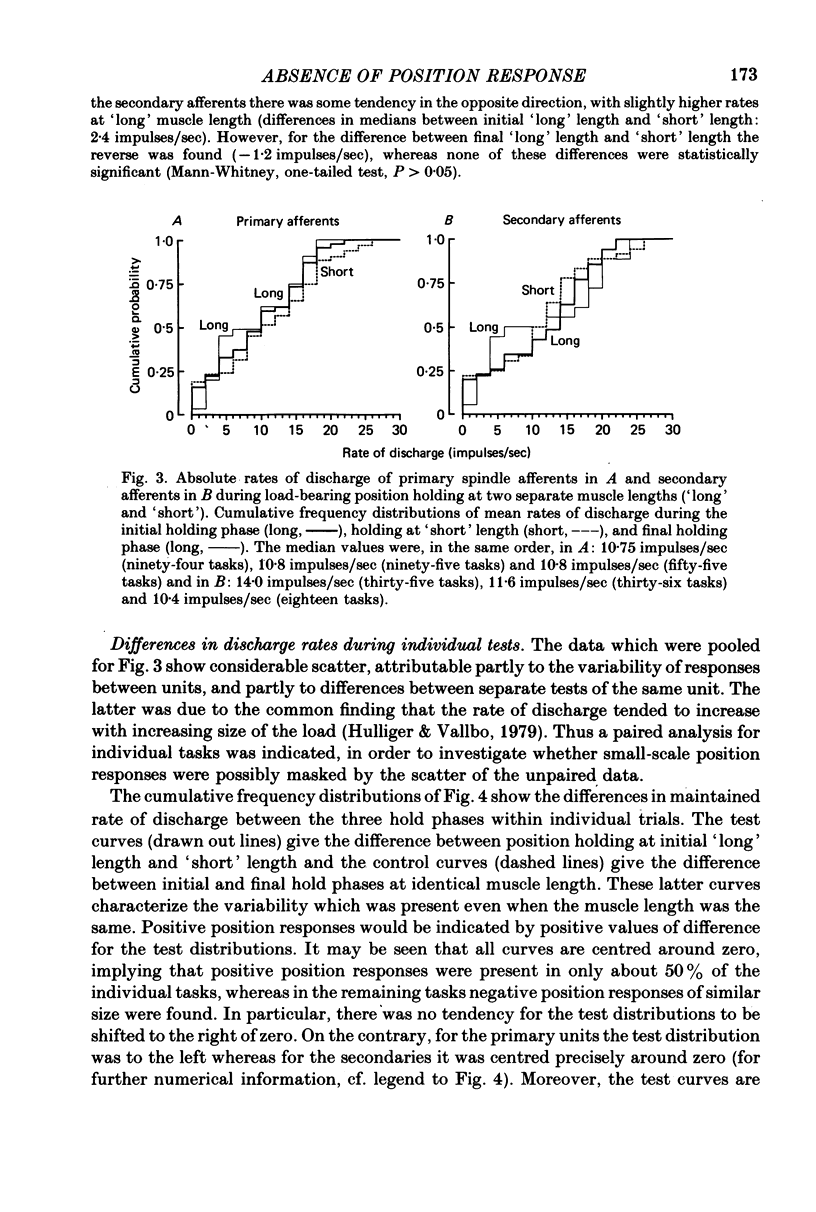


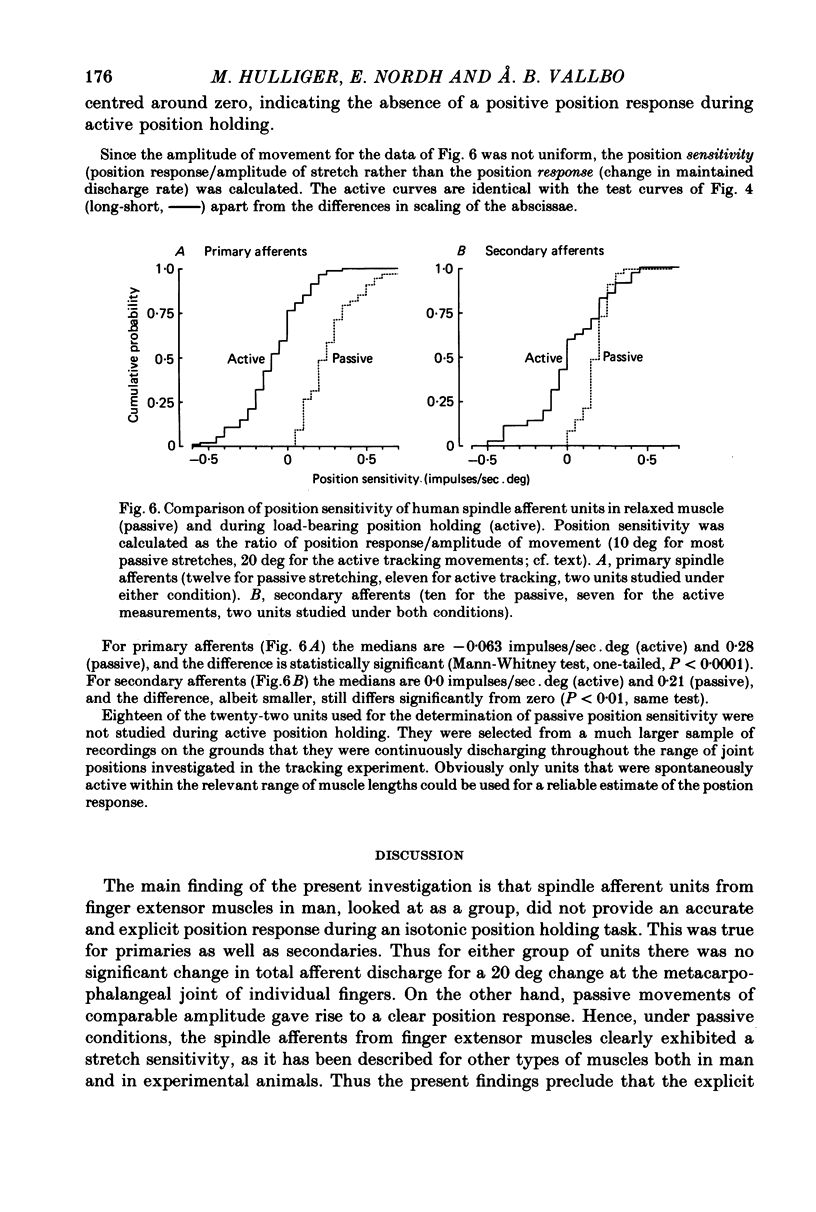
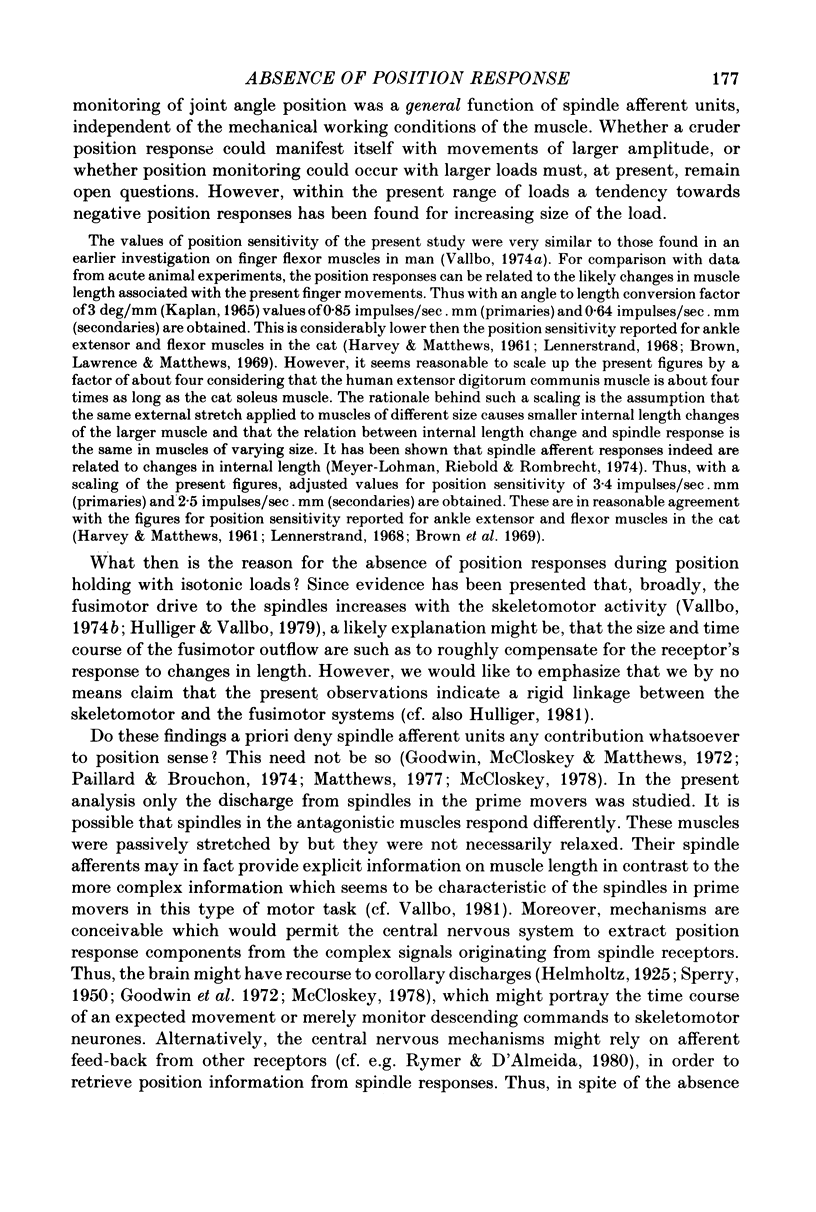

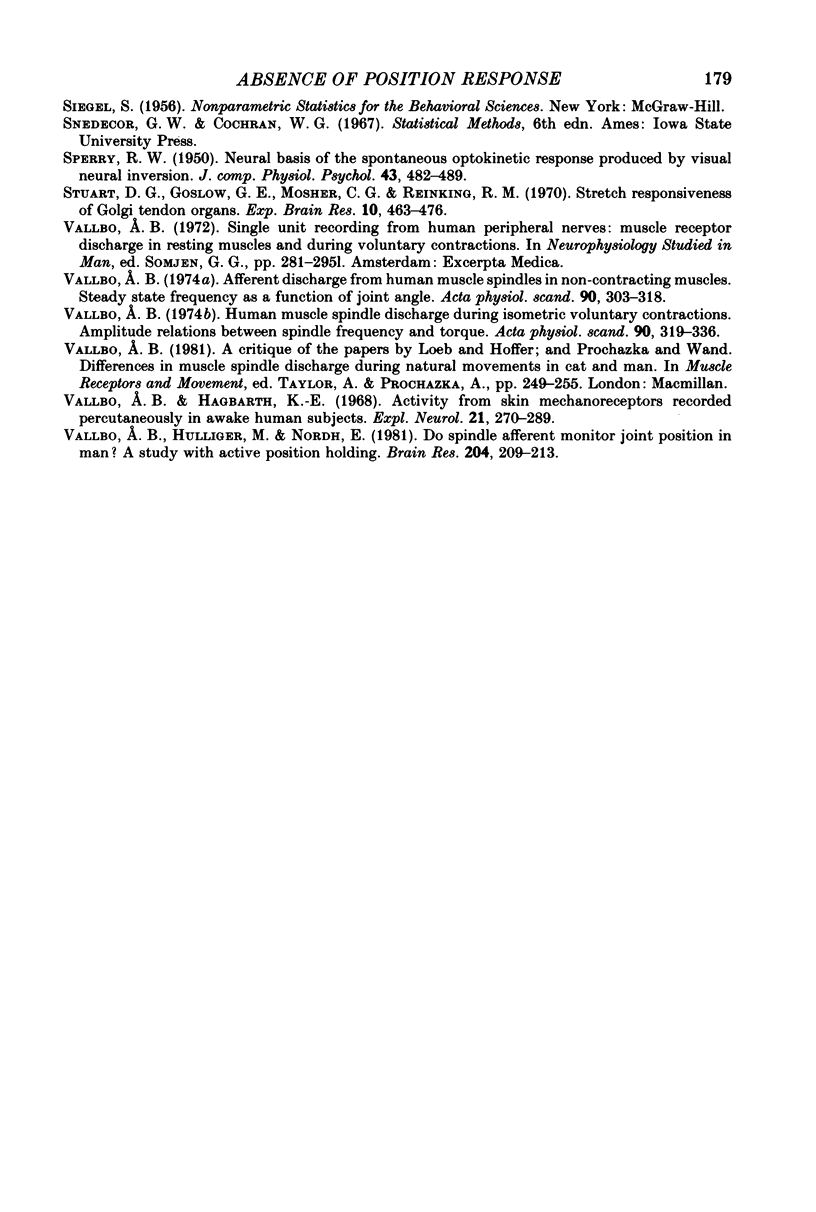
Images in this article
Selected References
These references are in PubMed. This may not be the complete list of references from this article.
- Brown M. C., Lawrence D. G., Matthews P. B. Static fusimotor fibres and the position sensitivity of muscle spindle receptors. Brain Res. 1969 Jun;14(1):173–187. doi: 10.1016/0006-8993(69)90038-9. [DOI] [PubMed] [Google Scholar]
- Burke D., Skuse N. F., Stuart D. G. The regularity of muscle spindle discharge in man. J Physiol. 1979 Jun;291:277–290. doi: 10.1113/jphysiol.1979.sp012812. [DOI] [PMC free article] [PubMed] [Google Scholar]
- Cheney P. D., Preston J. B. Classification and response characteristics of muscle spindle afferents in the primate. J Neurophysiol. 1976 Jan;39(1):1–8. doi: 10.1152/jn.1976.39.1.1. [DOI] [PubMed] [Google Scholar]
- Cheney P. D., Preston J. B. Effects of fusimotor stimulation on dynamic and position sensitivities of spindle afferents in the primate. J Neurophysiol. 1976 Jan;39(1):20–30. doi: 10.1152/jn.1976.39.1.20. [DOI] [PubMed] [Google Scholar]
- Goodwin G. M., McCloskey D. I., Matthews P. B. The contribution of muscle afferents to kinaesthesia shown by vibration induced illusions of movement and by the effects of paralysing joint afferents. Brain. 1972;95(4):705–748. doi: 10.1093/brain/95.4.705. [DOI] [PubMed] [Google Scholar]
- HARVEY R. J., MATTHEWS P. B. The response of de-efferented muscle spindle endings in the cat's soleus to slow extension of the muscle. J Physiol. 1961 Jul;157:370–392. doi: 10.1113/jphysiol.1961.sp006729. [DOI] [PMC free article] [PubMed] [Google Scholar]
- Houk J. C., Singer J. J., Henneman E. Adequate stimulus for tendon organs with observations on mechanics of ankle joint. J Neurophysiol. 1971 Nov;34(6):1051–1065. doi: 10.1152/jn.1971.34.6.1051. [DOI] [PubMed] [Google Scholar]
- Houk J., Henneman E. Responses of Golgi tendon organs to active contractions of the soleus muscle of the cat. J Neurophysiol. 1967 May;30(3):466–481. doi: 10.1152/jn.1967.30.3.466. [DOI] [PubMed] [Google Scholar]
- Hulliger M., Vallbo A. B. The responses of muscle spindle afferents during voluntary tracking movements in man. Load dependent servo assistance? Brain Res. 1979 Apr 27;166(2):401–404. doi: 10.1016/0006-8993(79)90227-0. [DOI] [PubMed] [Google Scholar]
- JANSEN J. K., RUDJORD T. ON THE SILENT PERIOD AND GOLGI TENDON ORGANS OF THE SOLEUS MUSCLE OF THE CAT. Acta Physiol Scand. 1964 Dec;62:364–379. doi: 10.1111/j.1748-1716.1964.tb10435.x. [DOI] [PubMed] [Google Scholar]
- Lennerstrand G. Position and velocity sensitivity of muscle spindles in the cat. I. Primary and secondary endings deprived of fusimotor activation. Acta Physiol Scand. 1968 Jul;73(3):281–299. doi: 10.1111/j.1748-1716.1968.tb04106.x. [DOI] [PubMed] [Google Scholar]
- Matthews P. B. Muscle afferents and kinaesthesia. Br Med Bull. 1977 May;33(2):137–142. doi: 10.1093/oxfordjournals.bmb.a071413. [DOI] [PubMed] [Google Scholar]
- McCloskey D. I. Kinesthetic sensibility. Physiol Rev. 1978 Oct;58(4):763–820. doi: 10.1152/physrev.1978.58.4.763. [DOI] [PubMed] [Google Scholar]
- Meyer-Lohmann J., Riebold W., Robrecht D. Mechanical influence of the extrafusal muscle on the static behaviour of deefferented primary muscle spindle endings in cat. Pflugers Arch. 1974;352(3):267–278. doi: 10.1007/BF00590491. [DOI] [PubMed] [Google Scholar]
- Paillard J., Brouchon M. A proprioceptive contribution to the spatial encoding of position cues for ballistic movements. Brain Res. 1974 May 17;71(2-3):273–284. doi: 10.1016/0006-8993(74)90971-8. [DOI] [PubMed] [Google Scholar]
- Rymer W. Z., D'Almeida A. Joint position sense: the effects of muscle contraction. Brain. 1980 Mar;103(1):1–22. doi: 10.1093/brain/103.1.1. [DOI] [PubMed] [Google Scholar]
- SPERRY R. W. Neural basis of the spontaneous optokinetic response produced by visual inversion. J Comp Physiol Psychol. 1950 Dec;43(6):482–489. doi: 10.1037/h0055479. [DOI] [PubMed] [Google Scholar]
- Stuart D. G., Goslow G. E., Mosher C. G., Reinking R. M. Stretch responsiveness of Golgi tendon organs. Exp Brain Res. 1970 Jun 25;10(5):463–476. doi: 10.1007/BF00234263. [DOI] [PubMed] [Google Scholar]
- Vallbo A. B. Afferent discharge from human muscle spindles in non-contracting muscles. Steady state impulse frequency as a function of joint angle. Acta Physiol Scand. 1974 Feb;90(2):303–318. doi: 10.1111/j.1748-1716.1974.tb05593.x. [DOI] [PubMed] [Google Scholar]
- Vallbo A. B., Hagbarth K. E. Activity from skin mechanoreceptors recorded percutaneously in awake human subjects. Exp Neurol. 1968 Jul;21(3):270–289. doi: 10.1016/0014-4886(68)90041-1. [DOI] [PubMed] [Google Scholar]
- Vallbo A. B., Hulliger M., Nordh E. Do spindle afferents monitor joint position in man? A study with active position holding. Brain Res. 1981 Jan 5;204(1):209–213. doi: 10.1016/0006-8993(81)90666-1. [DOI] [PubMed] [Google Scholar]
- Vallbo A. B. Human muscle spindle discharge during isometric voluntary contractions. Amplitude relations between spindle frequency and torque. Acta Physiol Scand. 1974 Feb;90(2):319–336. doi: 10.1111/j.1748-1716.1974.tb05594.x. [DOI] [PubMed] [Google Scholar]



